Ford’s Maverick stands as a counterpoint to Ford’s electric vehicles – as well as super-sized vehicles, like the formerly compact-sized pick-ups you used to be able to buy.
The Maverick sells so well Ford has had trouble keeping up with demand. On the other hand, there is so little demand for Ford’s electric vehicles – especially the F-150 Lightning – that Ford had had trouble finding places to park them while the glut of built-up inventory clears.
The why for this disparity is – as Thomas Jefferson might have put it – self-evident:
The Maverick is practical and affordable and so appealing.
The Lightning isn’t – because it’s very expensive and impractical.
There’s a lesson in there somewhere.
The Maverick is a compact-sized truck with a crew cab body and short (five foot) bed. Some would say it’s not really a truck – because it’s built on a front-drive/unibody layout (with AWD available optionally) which makes it more like a crossover that looks like a truck, like the Honda Ridgeline. Just one size down. Because trucks – traditionally – are built on heavier-duty (body on frame) layouts that are rear-wheel-drive (with 4WD available optionally). The difference there being that AWD is typically always all-wheel-drive (all four wheels are driven) whereas 4WD is typically part-time, with the rear wheels being the primary driven wheels until the 4WD is engaged.
A 4WD system also typically has a two-speed transfer case and Low range gearing; most AWD systems do not have that – though some mimic the function by using the transmission’s gearing to increase the leverage of the drivetrain at low speeds.
So, does the Maverick qualify as a “real” truck? Or does it just look like one?
And does it matter?
Not, apparently, to the 200,000-plus people who’ve bought one over just the past two years so far.
Prices start at $23,815 for the base XL trim, which comes standard with front-wheel-drive and a turbocharged 2.0 liter four cylinder engine; AWD is available as a stand-alone option that adds $2,200 to the MSRP.
The mid-trim XLT – which lists for $26,315 – comes standard with the same drivetrain (and the same option to add AWD) plus the option to buy a Tremor off-road package ($3,495) that adds a heavier-duty AWD system with additional driver-selectable terrain modes, a locking (and torque-vectoring) rear differential, full-size spare, skid plates and tailer hitch receiver, among other upgrades.
The XLT also gets a standard power locking tailgate and upgraded upholstery.
A top-of-the-line Lariat lists for $34,855 and for that you get standard synthetic leather upholstery, an eight speaker Bang & Olufsen premium audio system, wireless phone charger, sprayed-on bedliner, power sliding rear window, navigation, heated seats and steering wheel.
The Lariat also comes standard with AWD and the option to add the Tremor package.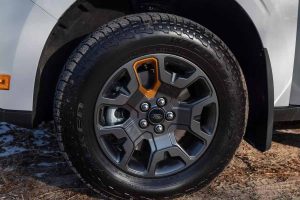
What’s New for 2024
The hybrid drivetrain package that was standard when the Maverick came out in 2022 is now a $1,500 option in all trims.
It is a no-cost option for the Lariat.
The hybrid Maverick is capable of delivering almost twice the city mileage you get with the Maverick’s standard turbocharged 2.0 liter engine – and it can take you almost 200 miles farther (in city) driving on a full tank of gas.
What’s Good
An affordable and practical truck at a time when both are badly needed.
Hybrid variant is the only vehicle out there with a bed that can go 40 miles on a gallon of gas.
Don’t think it’s not capable – because it’s not “really” a truck.
What’s Not So Good
It’s no longer the just-shy-of-$20k-to-start truck it was back in 2022.
High-mileage hybrid drivetrain is no longer standard – and so costs extra (unless you buy the extra-cost Lariat trim).
Crew cab-only (and short-bed) only.
When the Maverick was introduced as a new model two years ago, one of the big draws was its starting price – which was just under $20,000. The other draw was that for that price, you got a hybrid (gas-electric) truck that was capable of 40 MPG – in city driving, at least.
33 on the highway was pretty good, too.
Especially for a truck.
It’s still pretty good. But now it costs extra to get the hybrid drivetrain, which consists of a 2.5 liter four cylinder engine supplemented by an electric motor and battery that provide propulsion assistance when needed and that allow the gas engine to be cycled off when it’s not needed to propel the vehicle.
The reason for that being that Ford probably under-priced the hybrid Maverick in order to draw in buyers. It worked. Too well. It was hard to find a hybrid Maverick, if you wanted to buy one – because they’d all been sold (many sight unseen) and Ford wasn’t making enough to keep up with demand for them. The other problem – for Ford – was not making enough money on $20k hybrid Mavericks.
Hence the hybrid drivetrain now being a $1,500 option. And the Maverick itself no longer costs $20k, either.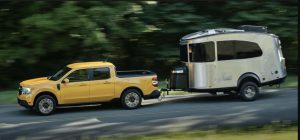
Even so, it still costs thousands less than other trucks, including Ford’s own Ranger pick-up, which stickers for about $10k more to start and doesn’t get 40 MPG anywhere, no matter how much more you spend on it.
On the downside – if it matters to you – the hybrid Maverick comes only with front-wheel-drive and can only tow a maximum of 2,000 lbs.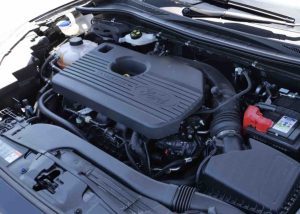
If you want to be able to tow up to 4,000 lbs., the standard 2.0 liter turbocharged engine – which makes 250 horsepower vs.191 for the hybrid – can do that. And you can get AWD, too. What you don’t get is the fantastic gas mileage delivered by the hybrid. Instead, 23 MPG in city driving and 30 on the highway (for the FWD version; with the optional AWD system, mileage dips a little to 22 city, 28 highway.
On the upside, so does the 0-60 time, which goes down to about 6.5 seconds vs. about a second longer to achieve the same speed in the hybrid.
On The Road
If you’re interested in driving a truck like they used to make them, you’ll like driving the Maverick. In part because you don’t have to climb in – or out of the Maverick. Its step-in height is car-like; no running boards or grab handles needed.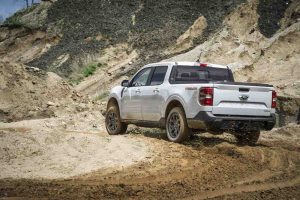
The other part is it’s not so wide you feel as though you’re using up pretty much every inch of the road. It’s also not so long you feel as though the back half arrives a few seconds after the front half gets there.
There used to be lots of compact trucks like that. No one sells them anymore (at least, not in this country) for a number of reasons, including the government incentives that reward the manufacturers for making ever-larger trucks and (effectively) punish the manufacturing of smaller ones. The compact trucks you used to be able to buy – models like the old Ford Ranger and the old Nissan Frontier – were easy to get in and out of, didn’t feel all jacked up (because they weren’t) and for those reasons were as easy to drive as a typical car of about the same size.

On the other hand, those trucks were trucks – and you felt that, too. Every time you hit a pothole. The old Frontier and Ranger had solid axle rears and leaf/coil springs. Simple – but primitive.
Just like trucks used to be.
But the Maverick – though it looks like a compact-sized pick-up – is more like a crossover in terms of its unibody layout and suspension arrangement. It has an independent rear suspension, which greatly tamps down what you feel when you drive the Ford over a bump (or a hole) in the road. Up front, MacPherson struts rather than heavy coils. It’s not as heavy-duty as a typical truck’s body-on-frame layout and suspension – but that’s exactly why the Maverick does not ride (or handle) like a typical truck.
It’s also more spacious on the inside than the compact-sized trucks you can’t buy in this country anymore. The driver doesn’t rub shoulders with the person sitting beside him and neither the driver nor the person sitting next to him has to get out in order for anyone else to get in. They just open the rear doors and get in – and out.
The hybrid’s city mileage is spectacular but it’s the hybrid’s range that’s even more so. This is a truck that can stop-and-go around town for almost 600 miles in between fill-ups. That’s more than twice as far, by the way, as the F-150 Lightning (Ford’s electric truck) can go in between charges.
Another point worth a mention is that while the non-hybrid Maverick is quicker-accelerating than the hybrid, the latter isn’t slow-accelerating. The latter can get to 60 in about 7.5 seconds which makes it about 2-3 seconds quicker to 60 than the four-cylinder-powered versions of the compact-sized trucks you used to be able to buy – none of which did better than about 25 MPG.
On the highway.
One thing about the Maverick that isn’t like the compact-sized trucks you used to be able to buy is that it comes only as a crew cab – with four doors – and only with a short bed. But that hasn’t apparently deterred many from buying it.
Probably many of them bought it because they don’t want to deal with a full-size truck, which is what the formerly compact-sized trucks you used to be able to buy have become. Models like the current Nissan Frontier, Ford Ranger and Toyota Tacoma are nearly as long as a typical half-ton truck from the ’90s and some are taller, too. The current (2024) Ranger, for instance, is 210.6 inches long and stands 73.9 inches high. A ’97 Ford F-10 regular cab with a short bed is 203.7 inches long.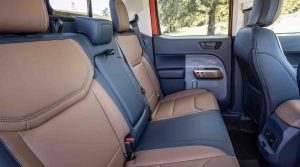
The Maverick is only 199.7 inches long – which means it’s only about six inches longer overall than a current mid-sized sedan such as Toyota Camry (192.1 inches long) and that means it takes up about the same space in your garage; which means there’ll probably still be plenty of space left in your garage for other things as well as room to walk around everything.
It can also carry five people, like a Camry (the back seat has enough legroom for a man 6 feet three like me to sit back there without his knees canted off to one side to avoid rubbing up against the back of the front seats) and a load of mulch in the bed – which a Camry can’t.
As mentioned earlier, the Maverick is also easy to get in and out of because you don’t have climb in or out of it. Yet it still has 8.3 inches of ground clearance, which is more than most crossovers and only about an inch less ground clearance than the compact-sized pick-ups you used to be able to buy, such as the old (2004 and prior) Nissan Frontier.
It’s also easy to get at what’s in the bed – and get the things you put in the bed out – because the bed isn’t so high off the ground you need a step ladder to get into the bed.
And because the bed’s walls aren’t up to your Adam’s apple.
In addition to – or as an alternative to – the Tremor off-road package that adds almost $3,500 to the Maverick’s MSRP, you can also opt for the FX4 package that adds all-terrain tires, heavy-duty cooling, tow hooks and suspension upgrades for a more manageable price ($800).
However, neither of these available off-road packages are optional for the base XL trim; you have to step up to at least the XLT to be able to add either.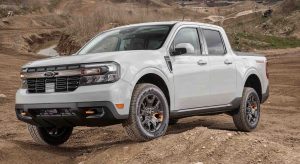
The Bottom Line
Equipped with its now-optional hybrid drivetrain, a 2024 Maverick will cost you $25,315 – which is about $5k more than Ford initially advertised the first-year/2022 Maverick’s just under $20k base price. That’s a steep increase – but there’s still nothing else like the Maverick.
And that’s why so many people think it’s still worth paying it.
. . .
If you like what you’ve found here please consider supporting EPautos.
We depend on you to keep the wheels turning!
Our donate button is here.
If you prefer not to use PayPal, our mailing address is:
EPautos
721 Hummingbird Lane SE
Copper Hill, VA 24079
PS: Get an EPautos magnet or sticker or coaster in return for a $20 or more one-time donation or a $10 or more monthly recurring donation. (Please be sure to tell us you want a magnet or sticker or coaster – and also, provide an address, so we know where to mail the thing!)
If you like items like the Baaaaaa! baseball cap pictured below, you can find that and more at the EPautos store!



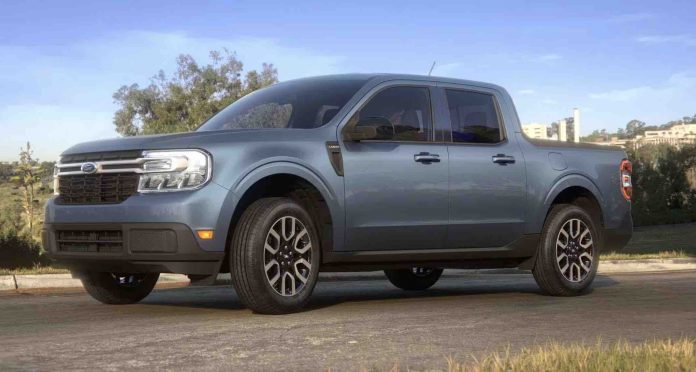

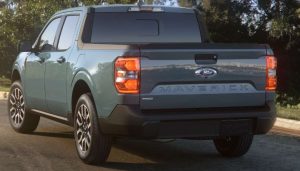
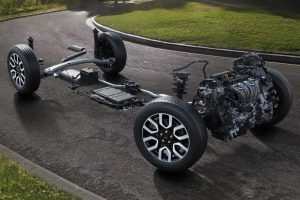

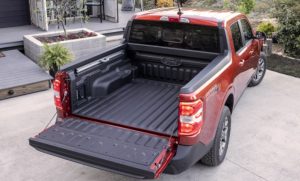
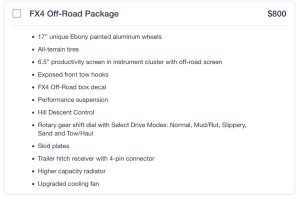







Eric, I’m surprised you of all people didn’t mention the 1970-1977 Ford compact car of the same namesake in your review. Totally different vehicle, but still; a missed opportunity to bring up another ’70s car in one of your articles – for shame! This 40-year-old whippersnapper is just teasing you – *wink*
Eric brought it up when the truck came out. Ford even initially made a bit of a nod. In 1969 the 1970 Maverick was introduced for $1,995. The original base price for the truck at introduction was $19,995.
Ford wouldn’t make a proper Maverick car these days anyway. They wouldn’t want to hurt Mustang sales. The same reason the 1970-77 Maverick was crippled for north america. Brazil was different as Mustang wasn’t sold there. It’s probably closer to original as a truck than it would be as a car.
Whatever its weaknesses and strengths may be, the Ford Maverick is one of a few vehicles that is made to meet economic rather than political demands.
People demanded a small, light, handy, inexpensive truck, and Ford supplied it.
In contrast, government forced car companies to build EVs which no one wanted except people with “rich guilt” who want to virtue signal or people with more money than sense who want “the latest technology.”
I’ve worked on a few mavericks, installing hitches and wiring, and my opinion is they are incredibly chinsy. They have the thinnest sheet metal of any vehicle I’ve ever seen, with the most delicate coat of paint on the underbody. Guarantee every one existing above the mason Dixon line will be rusted away completely in 5 years.
This truck does not have any more engine power than my newer car. How sad. I surmise that is how you get the better gasoline miles. Reading through the comments here, and seeing this truck also reminds me of those “sporks” that you find in some pre-packaged meals: It is not a spoon, and not really a fork that is useful enough for either a spoon or a fork task meal.
Hi Shadow,
The Mav with the 2.0 engine gets to 60 in less than 7 seconds, which is quicker than my V8 Trans-Am was when it was new back in ’76! And the hybrid Mav is about as quick as most V8 powered cars of the same era were – and it goes twice as far on a gallon of gas.
5 ft bed isn’t that much smaller than 1500 series short bed, which is most of what everyone buys. So if your hauling around appliances or mattresses, pretty much the same capacity.
Probably couldn’t fit a yard of mulch in it without dumping all over the bed sides, but it can tow a utility trailer. Good option for a lot of people who have a truck they don’t use as a truck very often.
Eric, I don’t know if you do motorcycle reviews, but I have some for you – the new lineup of small Honda bikes, especially the new 125cc line up of Grom, Monkey, and CT125 trail (like the old 110 trail).
I lucked out and managed to actually get a XR150l over the weekend, I had to drive to Eugene, Oregon (about 3 hours) because they sell out immediately and are not available in southern Oregon (these new small cc bikes like are the Maverik in super high demand and low availability.)
The XR150l is old school – carburetor, manual choke, rear drum, 5 speed with manual clutch, and retails (cue the drum roll) for $2971. And it is a Honda, not Chinese for such a low price. The 5 speed is still old school 1 down and 4 up.
Couldn’t be happier, a blast to ride (I haven’t ridden since high school) makes me feel like a kid again. It may be a perfect survival bike, the low 150ccs rated 128 mpg (so it is like a Geo Metro in dirt bikes) and is EMP proof (no computer and no ABS brakes). (Also huge gas tank, main and reserve = 3.5 gallons)
If Honda only made the trail in 200cc. The showroom (Traks out of Eugene) was chock full of Kawasakis, Yamaha’s, etc. yet what bikes were selling out immediately:
Honda CT125
Honda XR150l
Yamaha TW200
The salesman told me they can not get them – all three had long waiting lists. It is obvious to me there is a huge untapped market for the low cc dual sport motorbikes – survival bikes with large rear racks. The most sought after color for the CT125 is green. Everyone knows the shit is coming down the Albert C. Pike highway to hell – California to increase gasoline tax 50 cents in next two years. With CA billions in debt, and trying to oust us from ICE cars, they surely will keep jacking gas tax making it uneconomical to have a gas car unless it is a hybrid. So the point is, go high mpg early and you can’t lose.
Wow. Strap a gallon jerry can on the back fender and you’re good to go for more than 500 miles!!! Road closed? No problem. Nice purchase.
Check out this guy, he raised his kids and decided to get the new CT1`25 trail and went cross county, this video is watch Eric needs to focus on, baby boomer nostalgia for retro bikes is going viral:
Honda Trail CT125 10,500 Mile Review
https://www.youtube.com/watch?v=sKzJuLujXrU
I think there are a lot of people who want to ride a motorbike that is not high performance or heavy like a Harley. IMO what the market desperately wants is old school enduro dual sport 200-230 cc range.
I agree, Jack –
I’ve owned a number of these bikes, including a Honda XL250 that was one of the best and most fun bikes I have ever owned. Single cylinder, air cooled. One carburetor and no electronics (other than a magneto). Kick start. It ran and ran and ran and ran… had it forever and wish I still did.
Ford has dropped in a spunky 250-hp 2.0-liter four-cylinder and an eight-speed automatic transmission; all-wheel drive is optional with this powertrain. A hybrid powertrain is optional and consists of a 2.5-liter four-cylinder that’s assisted by an electric motor for a combined 191 horsepower. This setup only comes with front-wheel drive and a continuously variable automatic transmission (CVT).
with the hybrid powertrain, the Maverick offers 1500 pounds of payload capacity and 2000 pounds of towing capacity. With the turbocharged four-cylinder and the optional Tow package, the Maverick can tow up to 4000 pounds.
Towing with a CVT….
CVT transmissions have a bad reputation when it comes to towing and it stems from a very good and logical reason. It is common knowledge that car manufacturers themselves will mainly use CVT transmissions in low power, low torque cars which will rarely be seen towing heavy camper trailers, boats, etc. CVT transmissions used to only be used in small city cars with small engines and they were perfect for those applications.
The reason for this is that CVT transmissions just do not handle high torque and power due to their design. If you paid any attention to the automotive world in the past few years, however, you surely noticed that CVTs are not just transmissions for small city cars anymore. They are also common in big SUVs like the Nissan Pathfinder or the 2021 Toyota Highlander. And those SUVs are going to be towing at least something in their lifetime. These bigger cars with CVT transmissions are usually featuring a “tow” mode with their CVT transmission which must mean they are built for towing. And in theory, they are!
Can CVT cars tow just as much as cars with standard automatic transmissions?
The short answer to this question is simply, no, CVT-equipped cars cannot two as much as cars with standard automatic transmissions or manual gearboxes can.
https://lifeonfour.co/car-talk/towing-with-a-cvt-transmission/
Failed CVT Transmission Teardown….
https://www.youtube.com/watch?v=16u2eYfX9-g
CVTs are not just transmissions for small city cars anymore. They are also common in big SUVs like the Nissan Pathfinder or the 2021 Toyota Highlander. These bigger cars with CVT transmissions are usually featuring a “tow” mode with their CVT transmission which must mean they are built for towing. And in theory, they are!
Maverick hybrid…no tow mode
FYI – Maverick 4k tow package requires: 2.0 Ecoboost, 8 speed conventional automatic, and AWD. Hybrid is rated to tow up to 2k lbs.
with the hybrid powertrain, the Maverick offers 1500 pounds of payload capacity and 2000 pounds of towing capacity
Yesterday that exact colored Mavvy parked next to my car at the store. First impression was Ridgeline. As I looked it over the thought “Erics gonna dig this masterpiece” def crossed my mind.
Its driver was a compact sized guy with tiny toddler daughter and it still looked a bit small. But yes, this is exactly what an intelligent human might actually buy in such an inflated bubble.
Henry lives!
$23,815….
The ones on the dealer lots are mostly $33,000 to $38,000
https://www.youtube.com/watch?v=LsTzOeu3eSM
Cars and trucks are too expensive…people aren’t buying…
CAR MARKET LAYOFFS ARE HERE! THOUSANDS LOSING THEIR JOB!
https://www.youtube.com/watch?v=xaPdBGzsBGg
I had this problem years ago when I was looking for a Subaru. Online the prices looked great! When you actually went to a dealer, all the cars were about $10k more!
I wouldn’t call these things a truck.
More like a “trucklet.”
That being said, it’s a brilliant idea, practical for 90% of what most are using trucks for and fascinating that Ford has had the entire market (save for a few Santa Cruzes) to themselves for years and seemingly years to come.
To my eye, the bare-chassis rendering of the Maverick resembles a 1909 Model T, with the addition of 115 years of sensible technology upgrades … such as hydraulic brakes, which ol’ Henry never approved of.
Too bad that it only comes with a CVT transmission. Another of Henry’s obsessions was planetary gearing. No reason we couldn’t have a six-speed, triple-planetary trans today, except for Michael Regan’s GHG Red Guards (who ought to love the high-mileage hybrid version).
Maverick seems like one of the few vehicles on offer that has any future, because it’s simple, useful and cheap. Just wish Ford made a two-door, extended-cab, six-foot bed model with a five-speed manual. I’d buy one today, oh yeah.
FYI – the 2.0 Ecoboost comes with an 8 speed conventional automatic.
The Maverick hybrid CVT DOES have planetaries. It’s not at all like the Nissan “steel belt” CVTs. Totally different. It’s got two planetary gearsets that modulate power between the electric motor and the gas motor. There’s some good videos on the internet from a professor of automotive tech at Weber State on how these work.
https://www.youtube.com/watch?v=vHc-_E8xWnM
Wow, thanks. Using an auxiliary motor on the sun gear to output a variable ratio from a planetary gearset sidesteps the belt drive Achilles heel of traditional CVTs. Henry Ford would approve!
Honestly the move from about 20k to the current 25k isn’t a price increase at all, it’s another evidence of inflation. 20% inflation hurts and its showing up in everything, the only saving grace is my silver stash of insurance is “going up” also. Priced in silver that maverick has gotten cheaper…
Hi Ernie,
That’s a good point; thanks for bringing it up!
Eric: I’m curious. How have you fared with your “FARM USE” plate on your Frontier?
Hi Mister,
I’ve had the Farm tags on my truck for a couple of years now and so far, so good. Probably in part because it is a truck and I do have a farm and the truck looks like it’s used for Farm Use, because it is.
The law changed recently as far as what qualifies for Farm Tags but I still plan to bob and weave. In two more years, it’ll qualify for Antique Tags, too!
I expect you’re often “Operating along a highway for a distance of no more than 75 miles for the purpose of obtaining supplies for agricultural or horticultural purposes, seeds, fertilizers, chemicals, or animal feed.” What with the chickens and all.
https://www.dmv.virginia.gov/vehicles/registration/farm/unregistered
Of course, you still can’t escape the insurance mafia though:
https://www.dmv.virginia.gov/sites/default/files/forms/vsa132.pdf
In Oregon antique means no more stupid smog test every two years.
I have a 2024 Maverick XL 2.0 AWD 4K Tow and my son has a 2023 XLT hybrid. We both love our trucks! I just posted a link to this article on the Maverick Truck Club site (https://www.mavericktruckclub.com/forum/threads/very-favorable-maverick-review.49145/).
Thanks, Robbie!
I like the Mav a lot; so much so I’d be tempted to buy one if my ’02 Nissan got stolen or wrecked.
I’d look at a Maverick if it had an option for a normally aspirated 2.5 L engine, but Uncle probably makes that impossible.
I share that thought to an extent, but it would be a performance dog compared to the 2.0 turbo or the hybrid.
Now, if you could get a 2.5 manual-transmission MPFI Maverick for $14-15k…
Ford Focus 2.0L Engine Teardown….A look inside…
https://www.youtube.com/watch?v=hUGxwbq0oL8
I have a ’23 hybrid. I love it. No complaints. For those who say it is isn’t really a truck because it is a unibody, there is a long history of “trucks” built on car platforms — Rancheros, El Caminos, etc.
In fact, that’s one of the Maverick’s main attractions to me. Ford no longer makes any cars except for the Mustang. The Maverick rides like a car and gets 45 mpg around town, but has a truck bed of you need it. Win-win for me.
I have an old F-150 if I need to do heavier-duty stuff, which is rare.
We have been besieged by automotive garbage for so long that this now looks attractive. 25 years ago it would have been laughed into instant extinction, and yet, by comparison to current offerings, it is in great demand.
Eric, the fact that you still manage to succeed in your chosen occupation is nothing less than heroic! Reminds me of a song by Air Supply:
https://www.youtube.com/watch?v=ogoIxkPjRts
My thoughts exactly. No offence to Eric and what he does, but imagine trying to be an automotive journalist today, having to act excited about current offerings.
I come here for the political musings, but on occasion, I will scan through a new vehicle article that catches my eye.
Their planned future is fake and gay, and this “truck” is no different. It’s a gay version of what a truck is supposed to be.
LCD touchscreen and all the digital doodads – gay
2.0 liter – gay
hybrid – fake and gay
tiny bed – gay
front wheel drive – gay
AWD instead of 4×4 – fake and gay
I’m all for tech advances, but the new tech has to be engineered better, simpler and cheaper than what it replaces, otherwise it’s not an improvement. Regulating the good out of existence and foisting mediocre upon us is not advancement.
I hear you, Philo –
Remember that scene in the original Godfather, in which the Don asks the funeral director to “use all your powers and all your skills” to make Sonny look nice in his casket? That’s how I often feel as I sit at my desk, wondering what to write….
Haha, I bet!
Fake and Gay? Now that’s just hurtful- I’m triggered!
I have to say I’m very tempted by a Maverick, not that it is a great truck but it looks like a pretty decent car I could haul a lawn tractor, a V8 engine, or some lumber in. An 8 foot box is better but this is a really interesting way to have a 30+mpg daily with some pickup functionality.
But since I’ll never buy a new vehicle its probably irrelevant.
“We have been besieged by automotive garbage for so long that this now looks attractive.”
That’s only partially true. Auto manufactures have been churning out shit for a long time. Do you remember the Chevette and the Vega? The Chevy Luv and the Ford Courier? If those vehicles were available today few people would want to drive them.
Vehicles manufactured in the past 30 years are light-years ahead of that stuff in terms of comfort and reliability. The only problem, as Eric constantly harps on, is the government safety, emissions and economy mandates that have forced the industry to turn out little turbo three-cylinder shitboxes in the past few years.
I had an ’89 Ranger single-cab base. I loved it, but it was pretty damn small. The Maverick is a far better and more useful vehicle.
Hi X,
The thing that shies me away from anything new is the effective non-repairability. New cars are too electronic; the owner can’t realistically do more than the most routine/basic maintenance, such as oil/filter changes and maybe a brake job. This assures the vehicle will become very expensive to keep as it ages and ages out of warranty.
I also will not have any “advanced driver assistance technology” or “connectedness.
Hence my eye on ’90s diesel-powered JDM Toyota HiLux when funds allow.
Agree. That’s the only real concern I have about the Maverick. Too software dependent. No barnyard wrenching on most of it. By contrast a 1995 pickup of any American make can be repaired indefinitely if it doesn’t rot out.
However… the hybrid has an 8-year, 100k warranty on the battery, electric motor and converter. So… ya throw the dice and take your chances.
Was kicking tires over at the Ford dealer at lunchtime the other day. They have a Bronco Raptor on the lot for $106,420. I remember because joked “you’d have to be stoned to think this was a good deal.”
Thing about that is, people who are buying Broncos are modding them. Because the factory versions of shocks, lockers and transfer cases are all compromised versions of what the off road crowd looks for. Like Jeep stands for “Just everyone else’s products,” the whole point of these things is to put that metal outbuilding to good use over the winter and wreck it up in summer. Can’t do that when you’ve got over $100K in monthly payments.
My neighbors have a Bronco which is a garage queen, venturing out onto the road only on nice days when the temperatures aren’t too hot.
I have no idea what the point is of owning the vehicle other than a long term play on the collector value since it is a first year of the reintroduced model.
Meanwhile I play hard with mine. Got the battle scars and everything plus pulled my friends Jeep out of with it:
https://www.youtube.com/watch?v=lYJMnwdNE9w&pp=ygUPYnJvbmNvIHNhdmVzIHpq
She’s getting better coilovers installed as we speak, factory shocks are rubbish that fall apart around 40-50k miles, so without the external reservoir, it was metal on metal
My youngest daughter just bought a 21 Bronco with 33k on the clock. Its a darned nice little rig. And a vast improvement over her 07 VW Bug- I hate having to keep that POS running.
I cannot imagine paying more than she paid for the used one though… and 106k? Not even with someone else’s money! For that I can have a real H1 Hummer with all the trimmings for a real off road capable rig.
Hell, I could have the Hummer with a M2 on a pintle and enough for a few thousand rounds of ammo for that kind of dough…!
I don’t know Ernie, I thought .50 BMG was getting pricey?
Oh, it’s still $4-5 per round unless you’re using something special. After I wrote that I went on Gunbroker and looked, the only M2’s available are semi auto for about $16k, so likely there are very few real M2’s on the market and accordingly really expensive. But happiness IS a belt fed weapon…
Or as Brandon Herrera would put it, “Belt-fed machine guns are based.” Hahaha
Of course Ernie one of those old BMF Activators that attached to the trigger guard might speed up the music some.
I watch a youtube channel –Motor Feed– where he peruses deal lots somewhere out west. One of his latest videos showed a row of Mav’s (guessing 15-20 or so). A year ago they were impossible to find. The thrust of the video was how the car market was slowing down bc prices are out of control. If I find the link, I’ll post it.
The 2024 Ranger is 210.6″ long. Heck a 2000 Crown Victoria is only 212″ long. I’m starting to see why the Maveric is popular, it will fit into a smaller garage. If I had to buy a new car it sounds like the Maveric would definitely be in the running. Not much bigger than a Camry but a lot easier to move generators and snowblowers in one.
I’m able to put my Maverick in the garage. I was surprised when I discovered it’s a bit longer than the 2016 Chrysler 300 I had, so not that small!
Some genius on You Tube referred to it as “diminutive”.
Just like “less slow” The Maverick is less large than the other trucks.
Diminutive it is not.
Ford was being clever with that initial $19,995 base price.
The original Maverick was $1995 back when it first appeared in April 1969.
After what Ford did to the owners of Focus and Fiestas with the Powersh*t transmission and it’s contempt for the buyers who made Ford in the first place {Ford is a premium brand now, peasants}, if I was obsessed with this car I would never buy it.
You beat me to discussing dimensions. Let’s look at the Maverick now.
I have one of the “old-school” Rangers, a 2011 SuperCab. The length and wheelbase for the Maverick from Ford official data are close to those for my Ranger:
Maverick wheelbase: 121.1 inches
2011 Ranger SuperCab 2WD wheelbase: 125.7 inches
Maverick length: 199.7 inches
2011 Ranger SuperCab 2WD length: 203.6 inches
Maverick width without mirrors: 72.6 inches
2011 Ranger SuperCab 2WD width: 69.4 inches
The SuperCab Rangers all came standard with a 6–foot bed measuring 72.7 inches. (The 7–foot bed that was an option on the standard-cab versions was not available with the SuperCab.) The Maverick bed is 54.4 inches long. The bed width at the floor for the Ranger is 54.3 inches, and 40.5 inches between wheelwells. The Maverick figures are 53.3 and 42.6.
So you could look at the Maverick as a “modern” (ha ha) version of the old Ranger, but with a crew cab, unit body, and shorter bed.